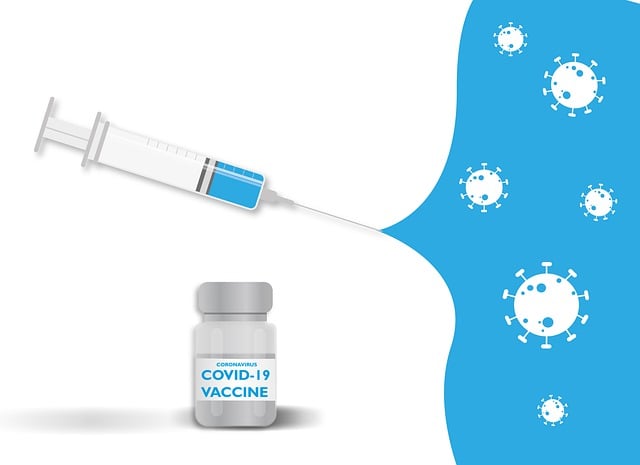Semaglutide medication, a GLP-1 receptor agonist, is revolutionizing diabetes management by mimicking natural hormones to enhance pancreatic cell function. It significantly improves insulin production and reduces glucagon secretion, leading to better blood sugar control. Clinical trials show substantial HbA1c reductions, while large-scale studies validate its safety and efficacy. Semaglutide offers improved convenience with once-weekly administration and potential benefits for weight management. Despite gastrointestinal side effects, it emerges as a powerful tool in type 2 diabetes treatment, with ongoing research exploring its role in prevention and combination therapies.
“Unraveling the complexities of pancreatic cell function and its disorders is key to managing diabetes. This article delves into the transformative potential of semaglutide, a cutting-edge glucagon-like peptide-1 receptor agonist. By exploring its mechanisms, we uncover how semaglutide medication not only regulates blood sugar levels but also enhances pancreatic cell performance. Through clinical studies and real-world evidence, this exploration highlights the drug’s efficacy, benefits, and potential side effects, offering a glimpse into its promising future in diabetes management.”
Understanding Pancreatic Cell Function and Its Disorders

Pancreatic cells play a vital role in maintaining blood sugar levels and overall metabolic health. These cells, primarily located in the pancreas, are responsible for producing insulin, a hormone crucial for regulating glucose metabolism. Insulin facilitates the transport of glucose from the bloodstream into cells, ensuring energy production and storage. Any disruption in pancreatic cell function can lead to severe metabolic disorders, such as diabetes.
Disorders like type 2 diabetes result from insulin resistance or inadequate insulin secretion by pancreatic beta cells. Semaglutide, a medication designed to mimic a natural hormone, has shown promise in improving pancreatic cell function. By mimicking the effects of glucagon-like peptide-1 (GLP-1), semaglutide stimulates insulin release and inhibits glucagon secretion, thereby enhancing glycemic control. This innovative approach offers a potential treatment for diabetes management and may open doors to novel therapeutic strategies targeting pancreatic cell disorders.
Introduction to Semaglutide: A Glucagon-Like Peptide-1 Receptor Agonist

Semaglutide is a groundbreaking medication that has made significant waves in diabetes management, specifically as a Glucagon-Like Peptide-1 (GLP-1) receptor agonist. This innovative drug mimics the action of a natural hormone produced by the gut, which stimulates insulin production and suppresses glucagon release in response to food intake. By activating GLP-1 receptors, semaglutide improves pancreatic cell function, leading to better blood sugar control.
The medication has shown remarkable efficacy in lowering HbA1c levels (a measure of long-term blood glucose control) and reducing the risk of diabetes-related complications. Its once-weekly administration and improved patient convenience make it an attractive option for many individuals with type 2 diabetes. Furthermore, studies have explored semaglutide’s potential benefits in weight management, providing a dual advantage for patients’ overall health and well-being.
The Role of Semaglutide in Regulating Blood Sugar Levels

Semaglutide, a medication known for its role in diabetes management, has shown promising effects on pancreatic cell function. By mimicking a natural hormone that regulates insulin release, semaglutide helps to maintain stable blood sugar levels. This is particularly beneficial for individuals with type 2 diabetes, as it can improve their body’s ability to process glucose effectively.
The medication works by slowing down the emptying of the stomach, which in turn signals the pancreas to release insulin when needed. This careful regulation ensures that blood sugar levels remain within a healthy range, reducing the risk of both hyperglycemia and hypoglycemia. As a result, semaglutide has emerged as a game-changer in diabetes treatment, offering improved glycemic control and potentially slowing the progression of pancreatic beta cell failure.
Mechanisms by Which Semaglutide Improves Pancreatic Cell Function

Semaglutide, a medication designed to mimic a natural hormone, has been shown to significantly improve pancreatic cell function. Its primary mode of action involves enhancing insulin secretion in response to glucose, thereby facilitating better blood sugar control. This effect is particularly notable during meals, where semaglutide stimulates the release of insulin from beta cells, which are responsible for producing and storing this hormone.
Moreover, semaglutide exerts protective effects on pancreatic cells by reducing their apoptosis (programmed cell death) and improving overall cell survival. It achieves this through various mechanisms, including enhancing the stability of the endoplasmic reticulum, a cellular structure involved in protein folding and trafficking. By maintaining the health and functionality of pancreatic cells, semaglutide not only improves glycemic control but also preserves beta-cell mass, which is crucial for long-term management of diabetes.
Clinical Studies and Real-World Evidence of Semaglutide's Efficacy

Clinical studies and real-world evidence have consistently shown that semaglutide medication is a highly effective treatment option for improving pancreatic cell function, particularly in the management of type 2 diabetes. Numerous randomized controlled trials (RCTs) have demonstrated its ability to reduce blood sugar levels, with some studies reporting HbA1c reductions of up to 1.5% compared to placebo or standard care. These RCTs also highlighted semaglutide’s potential to enhance insulin secretion and improve glucose control, making it a game-changer in diabetes therapy.
Beyond the controlled environment of clinical trials, real-world evidence from large-scale registries and observational studies further validates the efficacy and safety of semaglutide medication. These studies have shown that patients receiving semaglutide treatment often experience significant improvements in metabolic markers, including weight loss, reduced blood pressure, and improved lipid profiles. The positive outcomes observed in diverse patient populations lend credibility to semaglutide’s potential as a versatile therapy for diabetes management, solidifying its place as a valuable tool in the medical arsenal against this chronic condition.
Potential Benefits, Side Effects, and Future Perspectives

The semaglutide medication has shown promising potential in improving pancreatic cell function, offering a glimmer of hope for diabetes management. Its ability to enhance insulin secretion and promote beta-cell proliferation could lead to better glycemic control. Clinical trials have demonstrated its effectiveness in reducing HbA1c levels, suggesting it may be a valuable addition to the arsenal of antidiabetic treatments.
However, as with any medication, there are considerations to keep in mind. Some patients may experience gastrointestinal side effects like nausea and diarrhea, which can impact quality of life. Long-term safety and tolerability remain areas of ongoing research. Future perspectives include exploring semaglutide’s role in preventing diabetes progression and its potential combination therapies with other antidiabetic drugs. Continued studies will help uncover the full extent of this medication’s benefits and limitations in managing pancreatic cell dysfunction.
